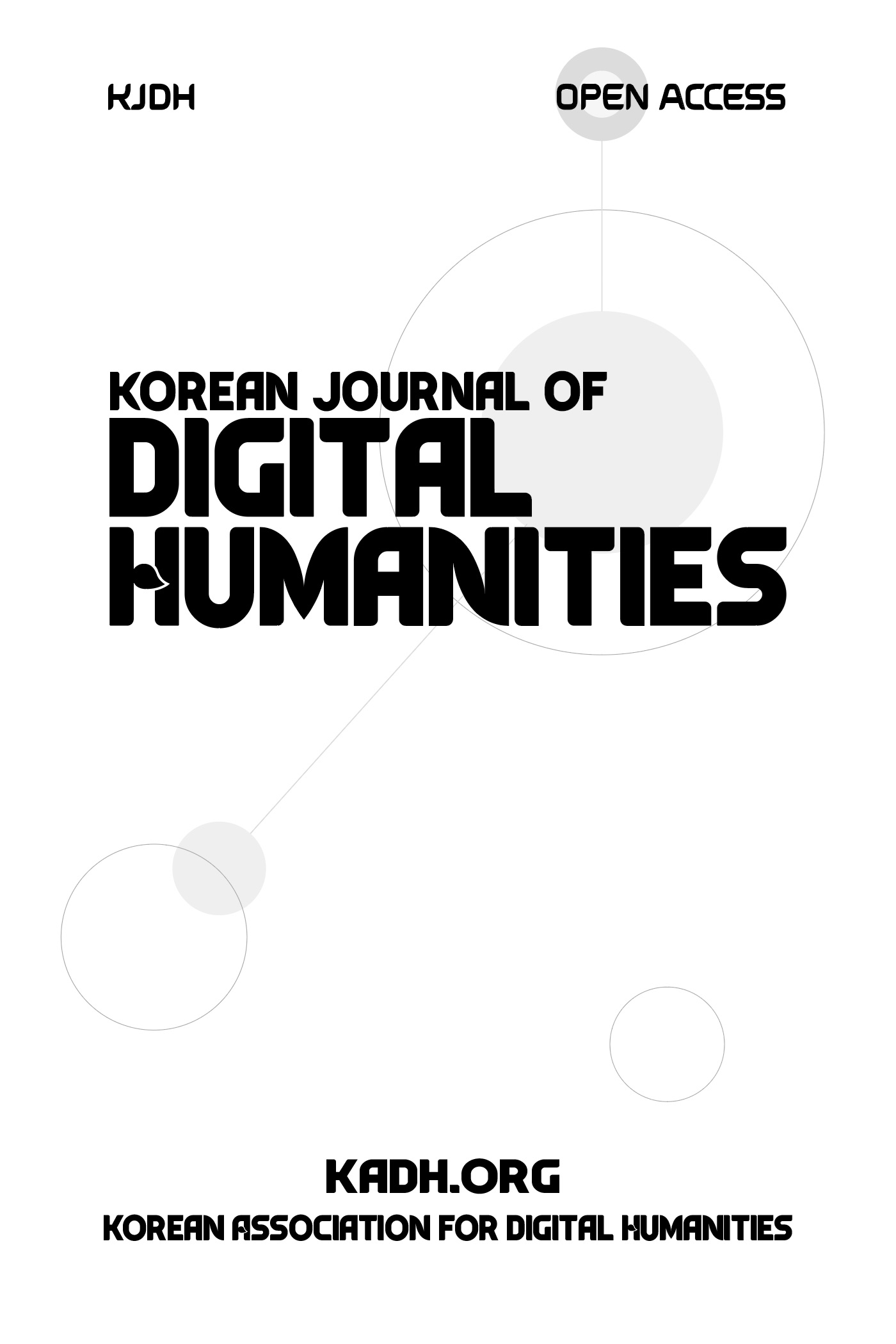국사편찬위원회 한국근현대잡지자료 데이터(2024.03.27.)
Data on Modern and Contemporary Korean Magazines by the National Institute of Korean History
초록
본 논문은 국사편찬위원회에서 발행한 근현대잡지자료의 RAWDATA를 취득하고 해당 데이터를 설계하고 구성을 탐색했다. 근현대잡지자료의 RAWDATA를 얻기 위하여, 공공데이터 포털의 공공데이터 제공 신청과 문서24를 통한 데이터 제공 신청을 행하였다. 그 결과 2024년 3월 27일 기준의 근현대잡지자료의 RAWDATA를 취득하였다. 근현대잡지자료 RAWDATA는 기본적으로 국사편찬위원회의 표준 XML 스키마(history.dtd)를 따르고 있다. <Level1>에서는 잡지 정보, <Level2>에서는 권호 정보, <Level3>에서는 개별기사 정보를 다루고 있다. 개별 기사의 본문은 <paragraph> 단위로 분리되어 있다. 문맥요소에는 index(객체명), emph(강조), pTitle(제목), name(저작자명), illustration(그림), tableGroup(표)이 존재한다. 다만, 현재 모든 잡지에 대한 본문 정보를 제공하고 있지 않기에 본문 텍스트가 있는 데이터에 대해서만 문맥요소가 제한적으로 존재한다. 근현대잡지자료 RAWDATA는 근대 문인 언어 분석과 근대 문인 사회네트워크 분석에서 사용할 수 있을 뿐만이 아니라, 나아가 근대 문학을 위한 형태소 분석기의 토대 데이터와 현대 한국어로의 번역 등 다양한 영역에서 사용할 수 있으리라 생각하며, 문학 연구자의 집단지성으로 한국근현대잡지자료의 RAWDATA가 더욱 풍성해지기를 기대한다.
- keywords
- 한국근현대잡지자료, RAWDATA, 공공데이터, 데이터 리뷰, 디지털인문학
Abstract
This paper acquires and explores the data schema of the RAWDATA of Korean Modern and Contemporary Magazine Materials from the National Institute of Korean History (NIKH). To acquire the RAWDATA, a request for public data provision was submitted through the Public Data Portal, and a request for data provision was submitted through Docu24. As of March 27, 2024, the RAWDATA of Korean Modern and Contemporary Magazine Materials was acquired. The RAWDATA of Korean Modern and Contemporary Magazine Materials basically follows the NIKH standard XML schema (history.dtd). <Level1> deals with magazine information, <Level2> deals with volume information, and <Level3> deals with individual article information. The body of each article is divided into <paragraph> units. Contextual elements include index (object name), emph(emphasis), pTitle(title), name (author name), illustration(figure), and tableGroup(table), but they are currently only available for data that has body text, as not all magazines currently provide body text information. The RAWDATA of Korean Modern and Contemporary Magazine Materials can be used for analysis of modern literary language and modern literary social networks. It is also expected to be used in various fields such as the foundation data for morpheme analysis tools for modern literature and translation into modern Korean. We hope that the RAWDATA of Korean Modern and Contemporary Magazine Materials will become even richer through the collective intelligence of literary scholars.
- keywords
- Korean Modern and Contemporary Magazine Materials, RAWDATA, Public Data, Data Review, Digital Humanities
- 투고일Submission Date
- 2024-04-30
- 수정일Revised Date
- 2024-05-15
- 게재확정일Accepted Date
- 2024-05-17
- 다운로드 수
- 조회수
- 0KCI 피인용수
- 0WOS 피인용수
_3200-704_투명.png)


